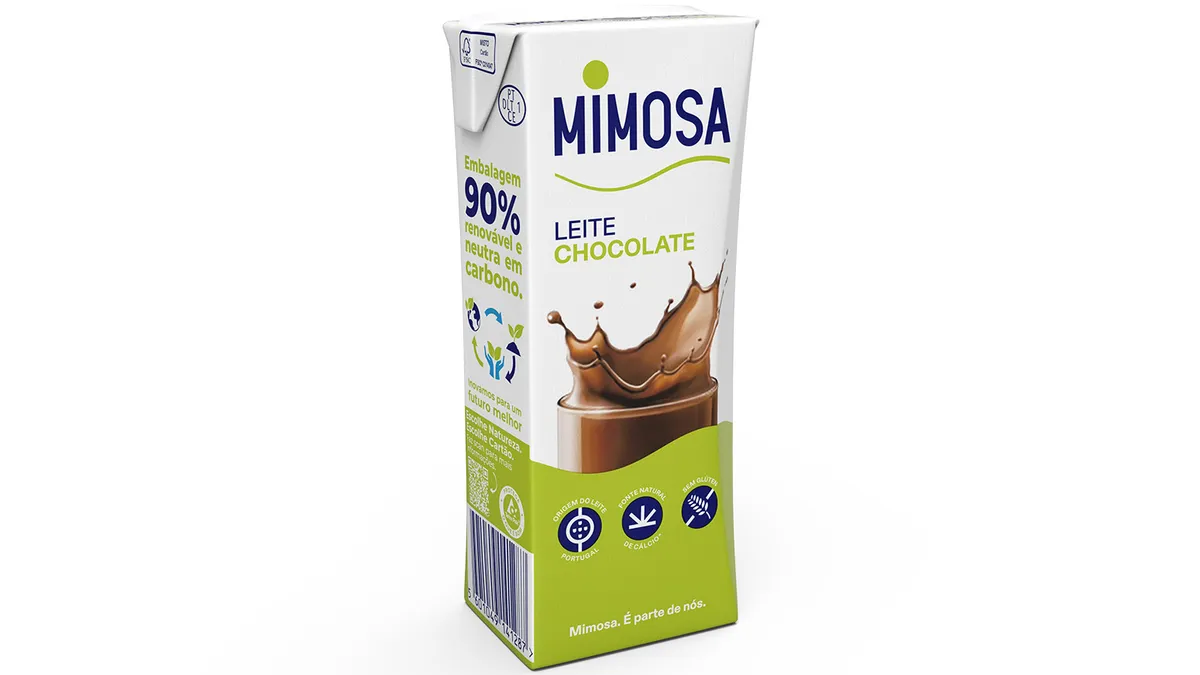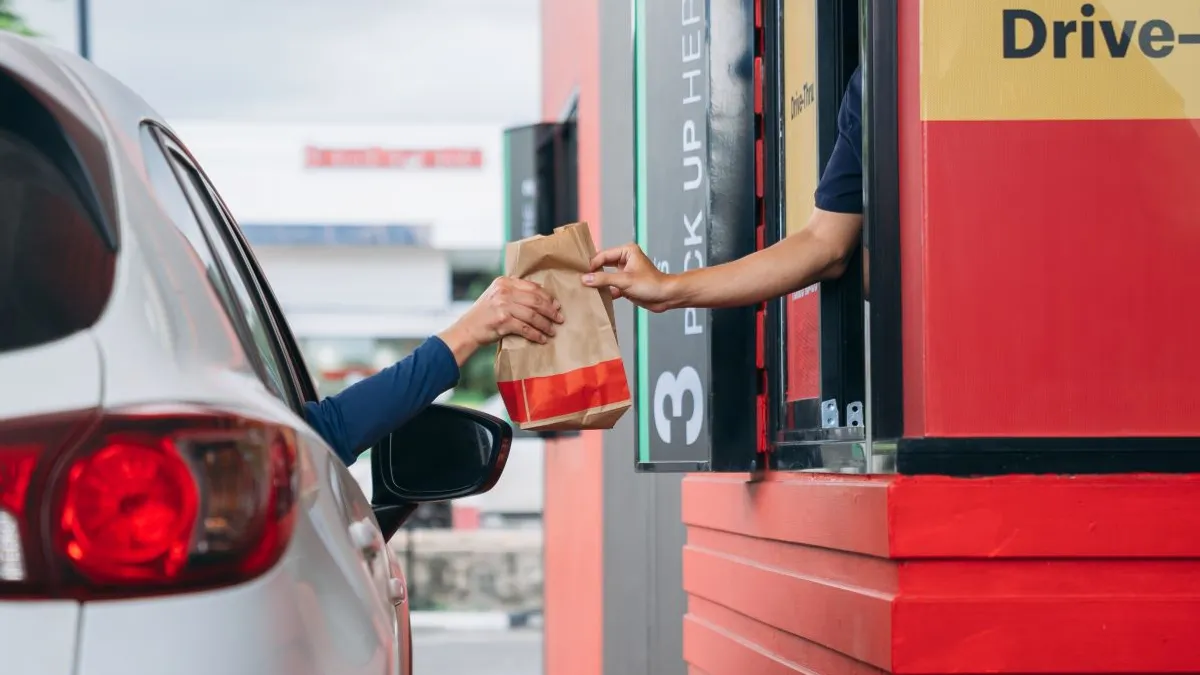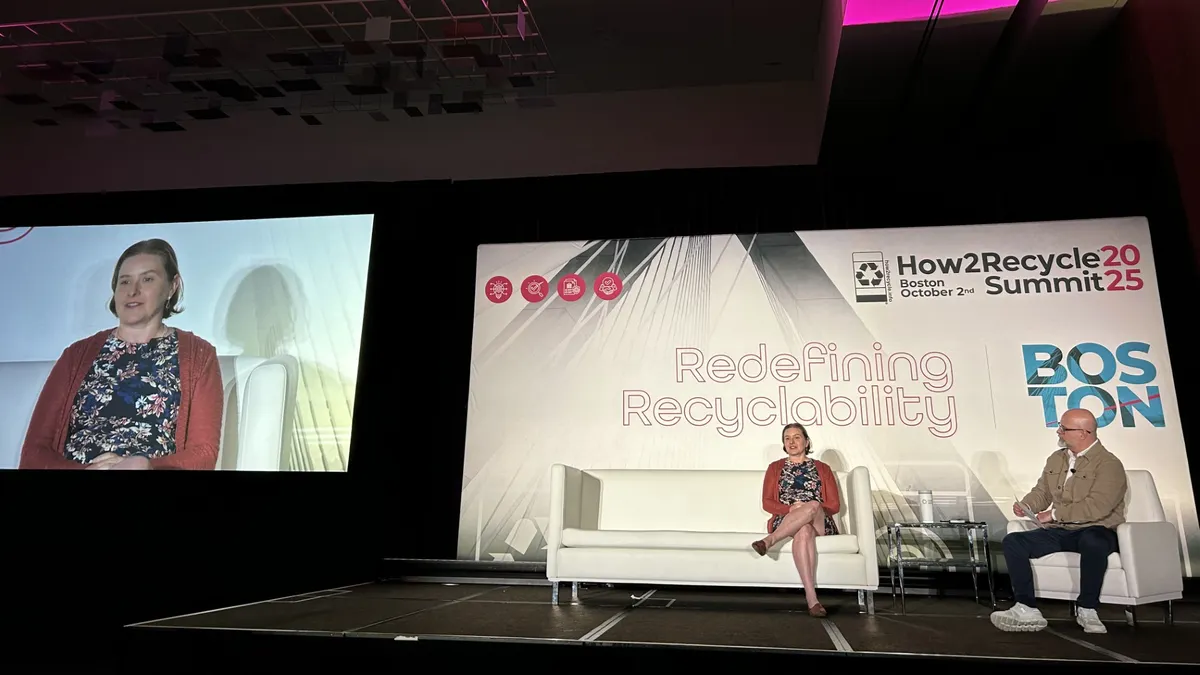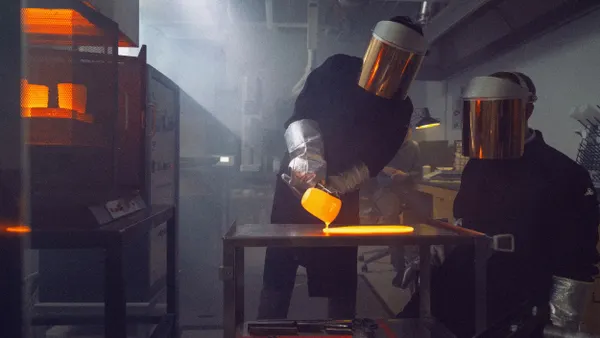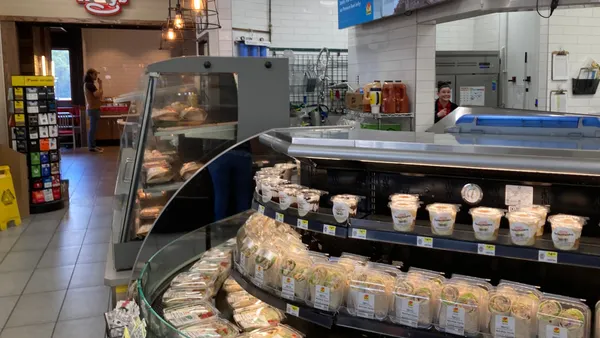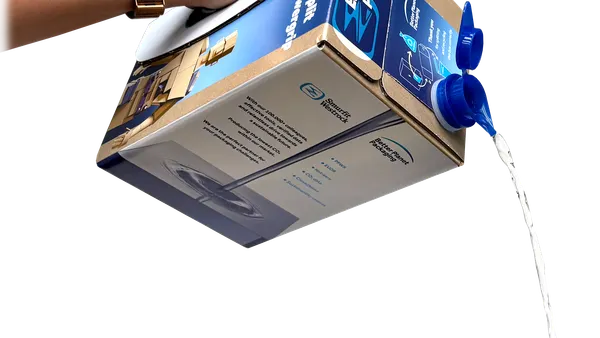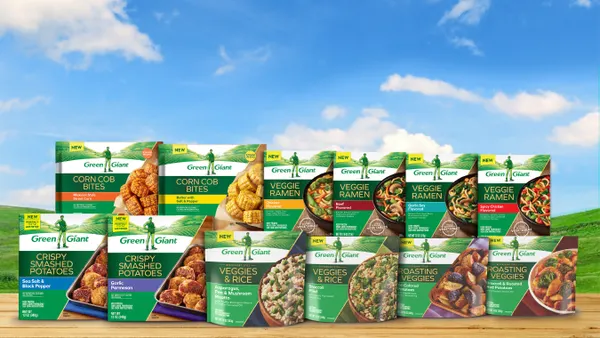Dive Brief:
- Tetra Pak partnered with Portuguese dairy company Lactogal to create an aseptic carton with a paper-based barrier that nearly eliminates the aluminum layer typically found in such beverage cartons.
- The Tetra Brik Aseptic 200 Slim Leaf’s paper-based barrier has a “thin layer of metallization” that reduces the carton’s metal content to 0.05%, compared with the typical 5%, according to Marco Marchetti, vice president of packaging materials and sales distribution systems at Tetra Pak.
- This version reduces the carton’s carbon footprint by one-third, increases its renewable content to 90% and aids recyclability, Marchetti said. Tetra Pak intends to make this packaging option available to customers in other countries as well. Widespread production is expected by 2025.
Dive Insight:
Cartons’ multiple layers of different materials — paperboard, plastic and metal — often render them more complex to recycle than monomaterial packaging. That’s one characteristic Tetra Pak has been working on as a founding member of the Carton Council — along with Elopak, Pactiv Evergreen and SIG — which formed in 2009 to expand carton recycling in the United States. At the group’s inception, the domestic carton recycling rate was 6%, growing to 20% last year. Now, 62% of U.S. households have access to carton recycling, exceeding the 60% access threshold in the Federal Trade Commission’s Green Guides in 2017.
Tetra Pak set out to reduce the amount of metal in the carton developed for Lactogal to improve recyclability, Marchetti said, while still maintaining the beverage protection against light and oxygen that the typical metal layer provides. The innovation simplifies the packaging “because they’re getting only two materials: Basically we have paper and polyolefin” when the aluminum is eliminated or reduced to a nearly negligible amount, he said, adding that the new metal layer is “super, super, super thin” and is “10 times less than the ink that you have on the package.”
While most aseptic cartons contain 70% fiber, he said, this version contains nearly 80% and has been certified as carbon neutral by the Carbon Trust. Marchetti pointed out that the plastic layer is made with sugar cane, and the carton is free of PFAS.
“Overall, we get a solution that is more renewable, with more paper content and with a lower CO2 impact,” he said. “This is fundamental that we continue to deliver our good food protection while improving and making our packaging more environmentally sound.”
Tetra Pak initially did a couple years of R&D work to replace the metal layer with a plastic one. But last year it transitioned its focus to a fiber-based barrier and began conducting a pilot project that included consumer testing. The paper barrier doesn’t negatively impact the value chain and adds value because “the specialized paper mills that receive our package can extract more and more paper,” Marchetti said.
“The paper barrier is really the starting point for the future ... for cartons to become more renewable and become a better packaging solution for the environment,” he said.
Correction: This story has been updated to correct the amount of metal and the description of the company’s use of sugar cane in the carton.



